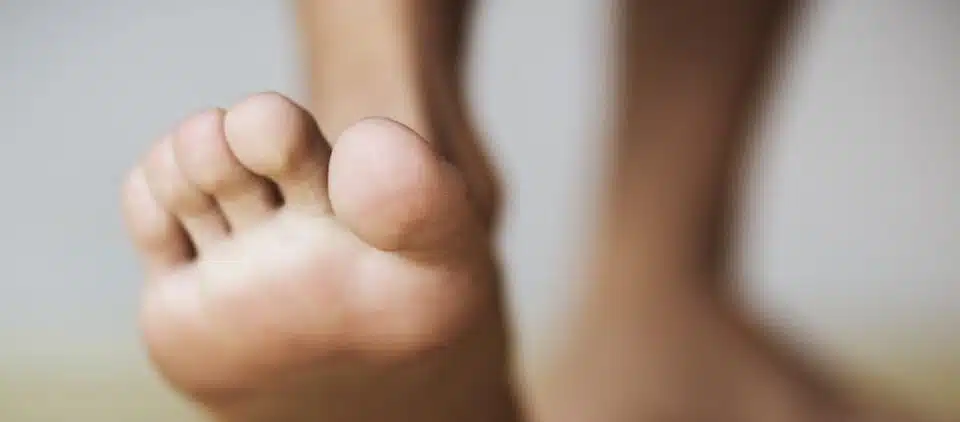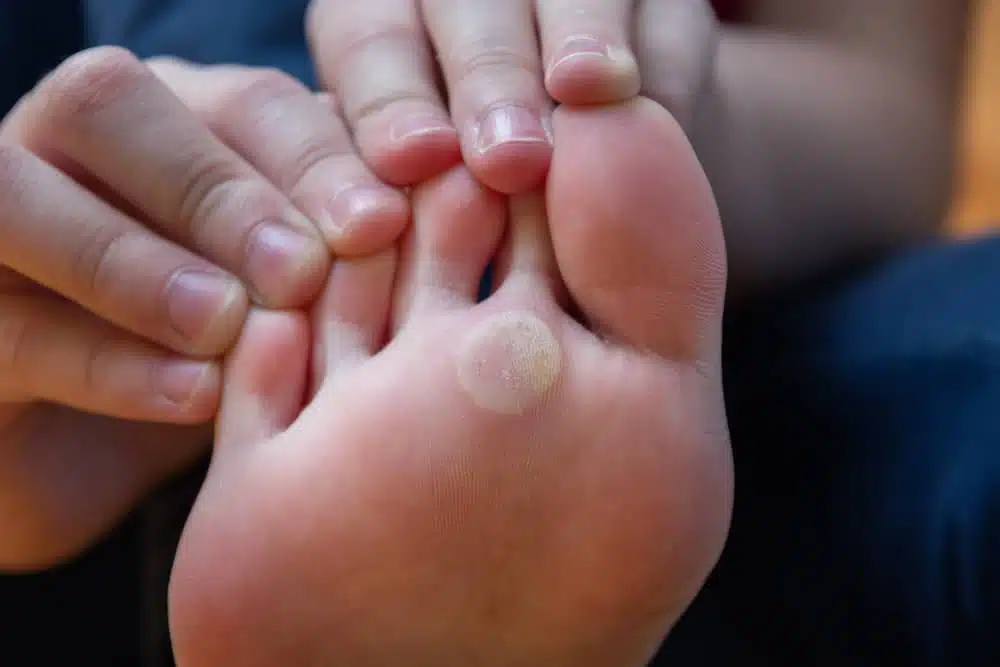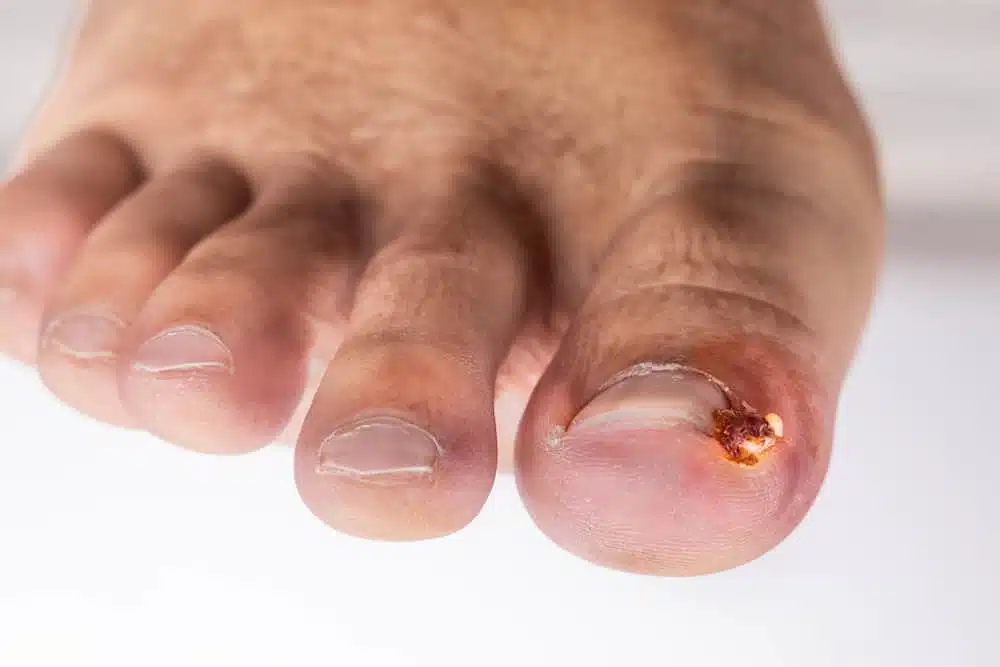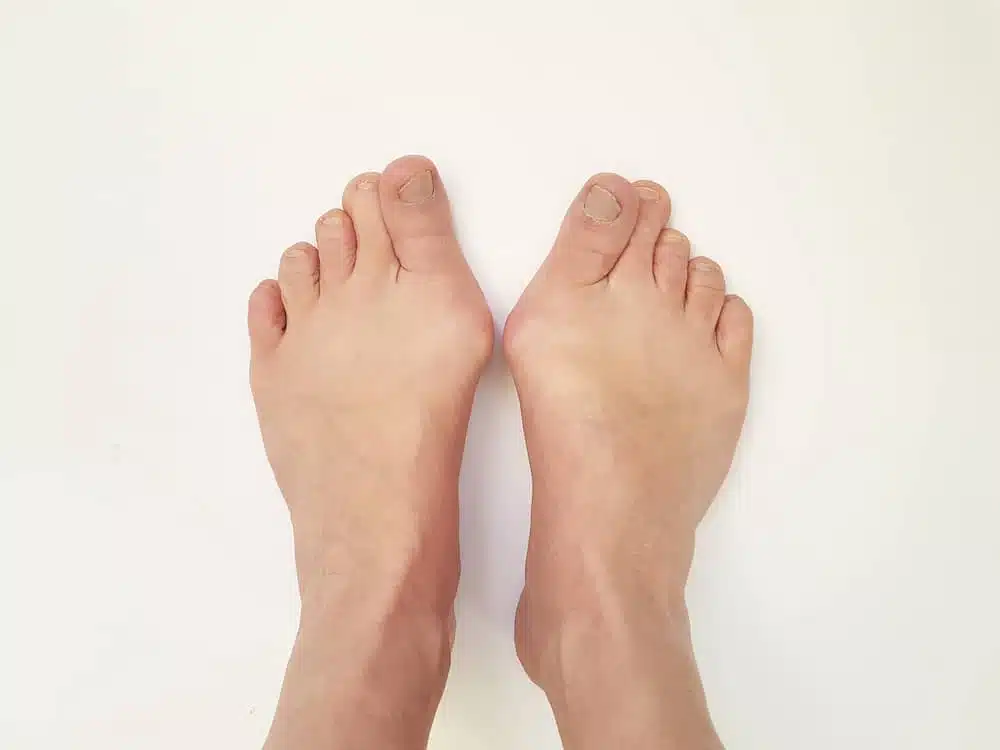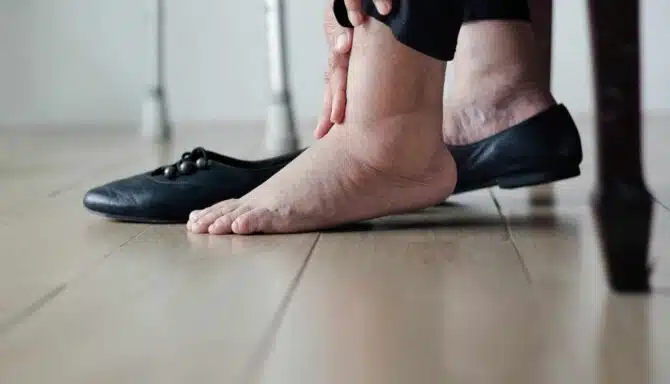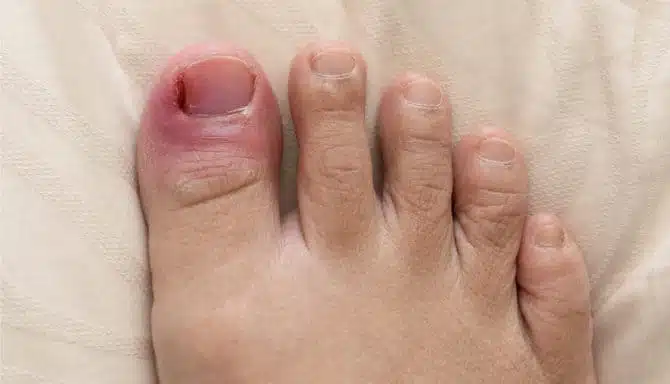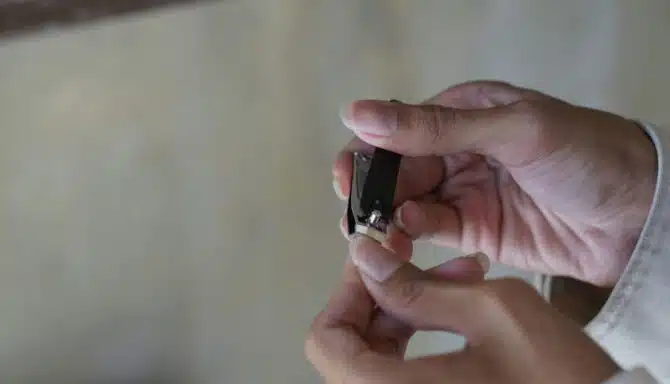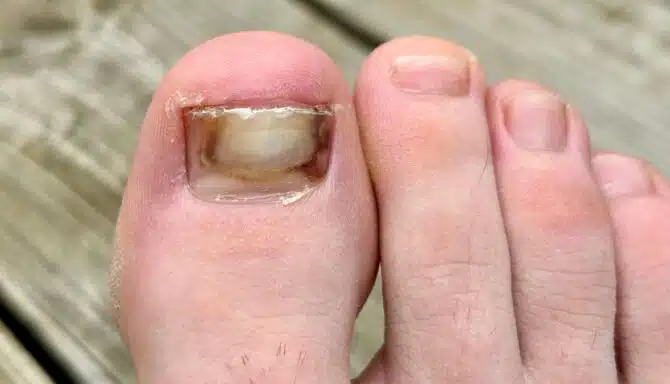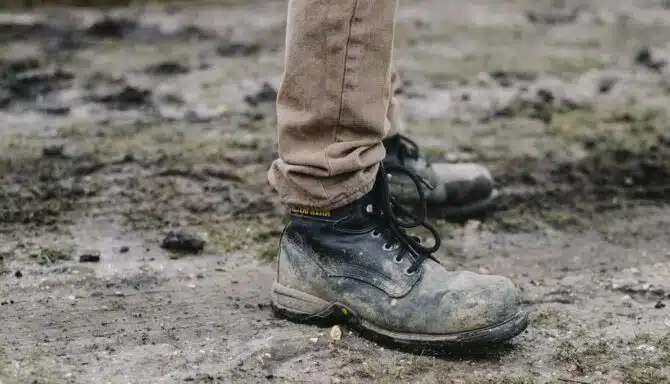There can be a range of discolouration in your toes. The most common is a pinkish/red hue – a sign of red toes.
Red toes may result from cold temperatures, toe injury, infection, or potential medical conditions. Red toe onset may be immediate, or red toe onset may be progressive. The redness often resolves itself, but it may sometimes present symptoms of underlying medical conditions.
Learn more about red toes and potential risks in our article below!
Why are my toes red and itchy?
Several causes result in redness in your toes. Red toes result from inflammation, injury, temperature, skin irritation, and infection. Varying degrees of redness may indicate the severity of damage to the toes. In some cases, redness may subside independently, while others may require medical attention.
What medical conditions cause red toes?
There are a variety of medical conditions that induce red toes. Red toe causes range from skin conditions to musculoskeletal damage to infection. Below, we’ve categorized medical conditions that cause red toes by severity. Note that all medical conditions can have varying degrees of severity, so use this list as a reference, not a diagnosis.
Lower severity
Low-severity medical conditions that cause red toes are short-term causes and often subside independently. Proper attention and care are required to prevent additional damage. However, low-severity medical conditions that cause red toes are more surface-level and less cause for concern.
Blisters
A blister is a small fluid-filled bubble that forms just under the outer layer of the skin. The fluid (usually a serum, rarely blood) is a natural cushion to protect the tissue underneath from friction and irritation. Fortunately, blisters often heal on their own once the source of friction is eliminated. As tempting as it may be, avoid popping the blister and allow it to heal naturally.
Frostnip
Frostnip is a mild, non-severe cold injury to the skin and tissue. As such, frostnip doesn’t cause permanent damage. You can treat frostnip with basic first aid. Above all else, you should try to escape the cold as quickly as possible. Possible complications include infection and temporary nerve damage, which are rare if caught at the frostnip stage.
Stubbed toe
A stubbed toe occurs any time you jam your toe against another object. A stubbed toe is a trauma injury. The injury results from a one-time accident. Depending on the severity, damage to the toe may cause swelling and inflammation, muscle injury, and even bone fractures.
Contact dermatitis
Contact dermatitis is a red, itchy rash triggered by an allergic reaction. The skin’s response to an irritant causes inflammation, followed by a rash. Contact dermatitis isn’t contagious nor life-threatening, but it can be very uncomfortable. Soaps, plants, detergents, or jewelry have the potential to cause an allergic reaction.
One can treat and prevent contact dermatitis by identifying and removing environmental allergens. A doctor can also prescribe topical medications to help treat flare-ups.
Athlete’s foot
Fungal skin infections are a common culprit of red toes. Athlete’s foot is one such common fungal skin. Athlete’s foot is a prevalent cause of the redness. The toe fungus is not life-threatening, but it is contagious and may spread elsewhere on your body or even to other people. It can also cause foot pain and difficulty walking if left untreated.
Nail infection
Paronychia is an infection of your nail folds typically caused by bacteria or a fungus and can cause toe pain and swelling, which causes redness and the appearance of red toes.
Ingrown toenail
An ingrown toenail is a nail condition that targets the toes, mainly the big toe. As the name applies, it occurs when the sides or edges of the toenail grow into the skin. As the nail pierces the skin, it can cause bleeding, redness and pain. If left untreated, the ingrown toenail can get infected.
Moderate severity
Moderate-severity causes of red toes are more severe and may be longer-lasting. Symptoms and recovery time may vary, and pain and discomfort may be more intense and significant. You may require medical assistance to determine the diagnosis and treatment method(s).
Gout
Gout is a form of inflammatory arthritis caused by heightened uric acid in the blood. Elevated uric acid levels lead to the formation of crystal deposits in the joint. The joint then becomes red, hot, swollen, and painful. The initial attack of this condition is usually sudden, with symptoms lasting for about a week. The most common joint it affects is the joint that connects your big toe to the rest of the foot. If left untreated, gout attacks may reoccur, increase in severity and lead to enduring joint damage.
Frostbite (superficial)
Superficial frostbite is a stage more severe than frostnip. Cold temperatures damage the skin and the underlying tissues in your toes. Blisters form 24-36 hours after rewarming, and you may experience pain and discomfort for several days.
Higher severity
More serious medical conditions that cause red toes may be chronic or permanent. These conditions can be irreversible and limit the motor function of your toes. Surgery may be a last-resort treatment option in severe cases.
Rheumatoid Arthritis
Rheumatoid arthritis (“RA”) is an auto-immune disease that causes chronic joint inflammation. RA causes periodic flare-ups of joint pain, stiffness and swelling, eventually making movement difficult. Although there is no cure, you can manage the condition with proactive and diligent treatment focusing on your overall health and well-being.
Diabetes
Diabetes can cause a chain reaction in your body that hinders circulation to the feet and toes. People with diabetes may experience two conditions that cause red toes: peripheral vascular disease and nerve damage (diabetic neuropathy). Nerve damage and reduced circulation can cause an itchy or numbing pain in the toes. Diabetes can also hinder the body’s ability to fight less severe conditions due to reduced immune response and blood circulation.
Frostbite (deep)
Deep frostbite is the most severe form of cold damage to the skin. Your skin or tissue may turn red and black and die altogether. You may sometimes lose muscle function and require surgery to remove part of the toe.
Bunions
A bunion is a foot condition of the first metatarsophalangeal joint. Bunions occur when the big toe misaligns. The shift in bone structure causes what appears to be a bony outgrowth. The outgrowth is simply the angling of your toes. The damage to the joint causes pain and redness, and the increased volume of your toes can make wearing shoes uncomfortable. Without proper footwear or orthotics, you can further aggravate your bunions.
Bunions are irreversible and have no “cure” other than surgery. However, physical therapy and accommodations, like orthotics and proper footwear, improve quality of life.
How can I prevent my toes from turning red?
Treatment and prevention for red toes depend on the severity of the underlying medical condition. Generally, low-severity medical or skin conditions are treated simply through rest and recovery. For low-severity conditions, the goal should be to focus on “How do I prevent this from getting worse?”; whereas for high-severity needs, much of the damage has been done and is irreversible. For more severe red toe conditions, the focus is more geared towards improving quality of life and implementing tools to improve mobility, like custom foot orthotics or orthopedic footwear.
We’ve created a treatment guideline below:
- Low severity. Low-grade medical or skin red toe conditions are treatable, often at home. Treatment methods include topical creams or prescription medication, rest, recovery, taping, or changing footwear. Further prevention should focus on recognizing signs and symptoms of red toes early and following proper foot hygiene.
- Moderate severity. Moderate severity medical or skin red toe conditions are a mix of prevention and treatment. A proper diagnosis is often required, followed by a treatment plan. Rest and recovery may be part of the treatment plan, but the recovery may be longer (weeks, not days). Like low-severity causes, prevention should focus on recognizing signs and symptoms of red toes early and following proper foot hygiene.
- Higher severity. Severe medical or skin red toe conditions are often irreversible and have no cure. Treatment methods focus on improving motor function, mobility, and well-being through orthopedic tools and physical therapy.
